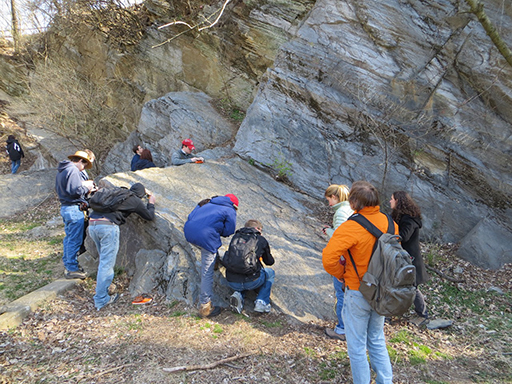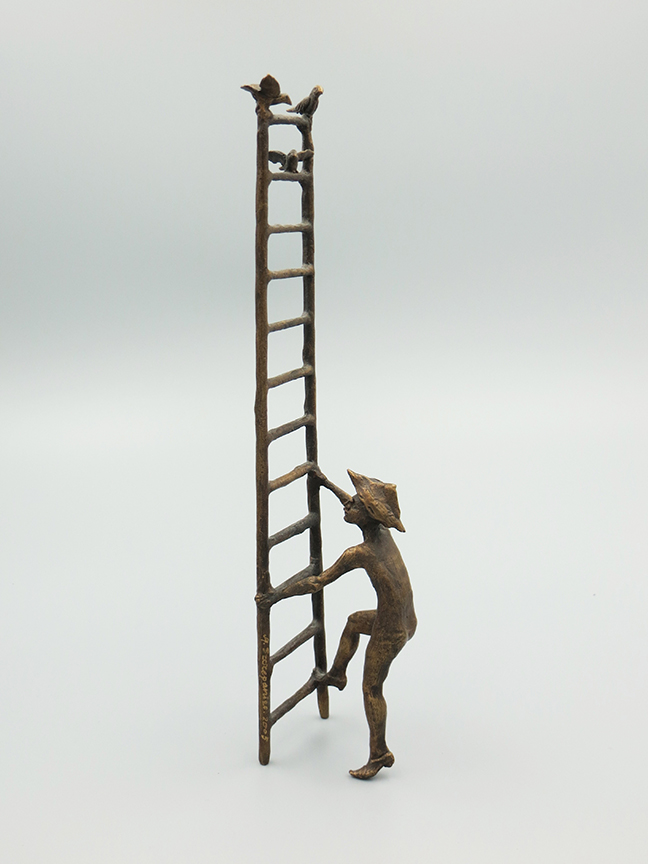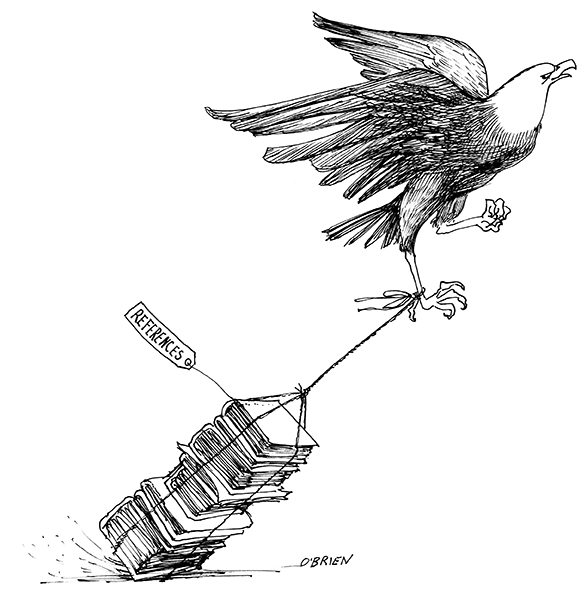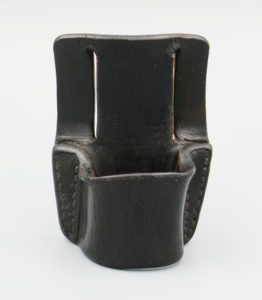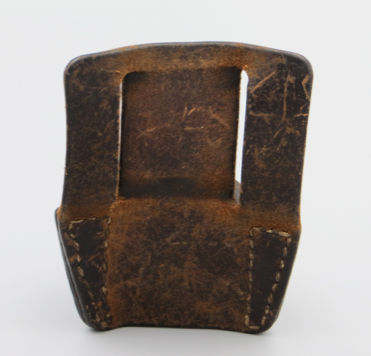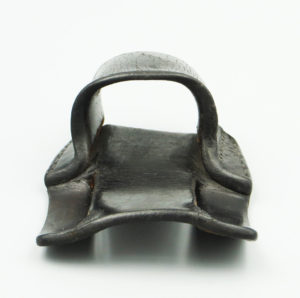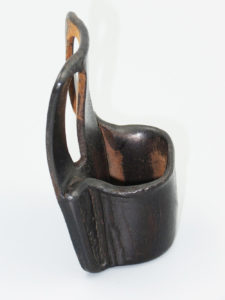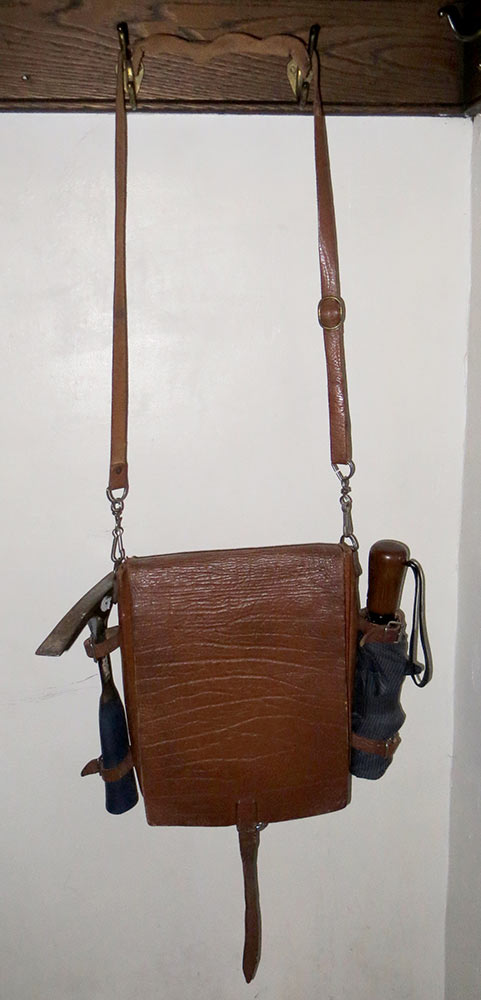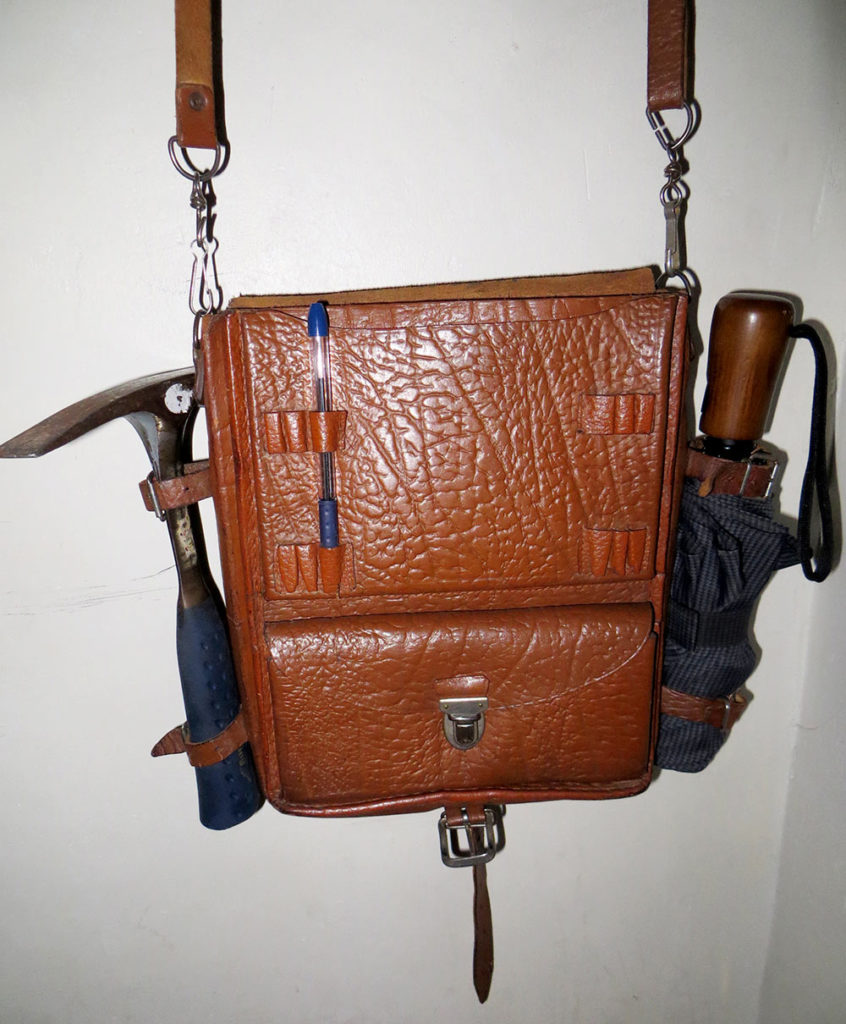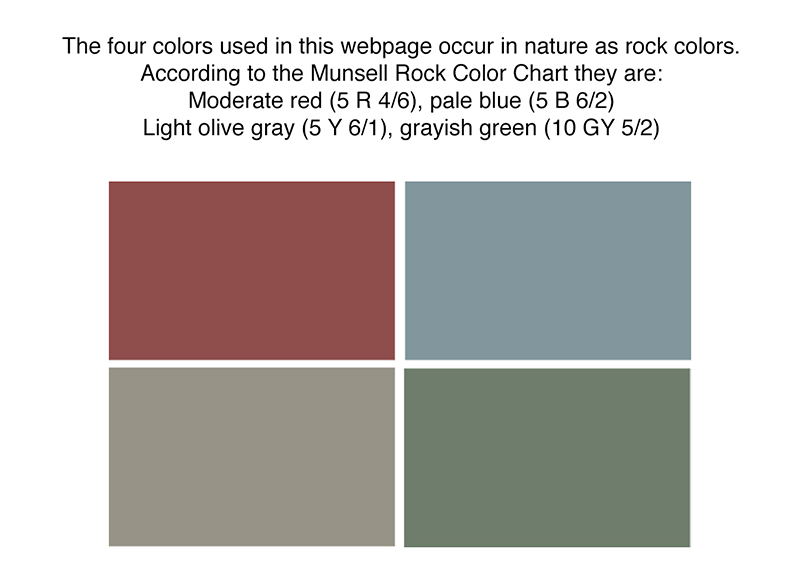ON SCIENCE
This section of Hermann Pfefferkorn’s web page contains citations, thoughts, and art work by various artists characterizing aspects of science in general and Earth science in particular. There will also be some ideas about field gear and other aspects of our profession.
*Contributions marked * are covered by a "Attribution CC BY" copyright, i.e. the material can be freely used as long as credit for the original creation is given.
Table of Contents:
(a) Thoughts on Applied Geology*
(b) Mente et Malleo [or Malleo et Mente?]
(c) Teaching Students to measure strike and dip (a photograph)*
(d) Striving for the Elusive Unknown (in Science)*
(e) Citations, citations, citations ... holding you down?*
(f) Doc Cady's Funeral*
(g) Saint Barbara
(h) The ideal hammer holder on the belt*
(i) Die münstersche Geologentasche*
(j) Goethe & Schiller's thought about Science
(k) Explanation of colors used on this web page
(l) The "Student Advising Scene" from Goethe's Faust
Thoughts on Applied Geology*
Hermann Pfefferkorn has been a paleobotanist but also an active geologist, geology consultant, and Earth science educator for over 52 years. His consulting work covered two areas (hydrogeology and sources of Earth materials) and his teaching mine reclamation. Below is a summary of his conclusions.
Mine Reclamation
Mining is one basis of our material wellbeing. Extraction of necessary materials (metals, other Earth materials, and fossil fuels) is feasible only in sites where natural processes have concentrated these materials. Thus, mining has to happen where the concentration of the materials do occur. Any extractive process (deep mine, open pit, drilling) will change the landscape. Therefore, any plan for mining should include plans for the future use of the landscape after the extractive process has ended. This has unfortunately not been done in most cases but should become a standard in the Future. Mine reclamation cannot restore the original condition (i.e. before mining began) because this is impossible. It should rather be sensible and intelligent sequential use of the landscape. I am aware of cases where mining did not only produce value through the mining itself but an equal or larger amount through the future use of the changed land or landscape.
This also means, that one might have to abstain from certain forms of extraction if the contamination of the area is too intrusive and there are no means to make it part of future use.
Hydrogeology
Clean water for consumption and other uses should be a basic right for every human being. Groundwater plays a major role in the supply of clean and healthy water due to the ability of many Earth materials to clean water in its travel through the underground. However, human carelessness has often overwhelmed groundwater systems and contaminated them in highly irresponsible ways. Hermann served as a consultant for several groundwater occurrences and could demonstrate that irresponsible behavior to save money in the short run lead to extremely expensive remediation years or decades later. In other groundwater systems remediation was impossible. One has to understand the whole hydrogeological system to do the right thing and save clean water for society’s needs.
Source of Earth materials
Sand grains, small rock fragments, or soil particles are often found in unusual places in machinery or other human structures. These Earth materials can tell where a car or other machine has been and where this material originated. Hermann has solved these problems for the contamination of a fishing stream and of certain airplane engines. To do this kind of work one has to be familiar with igneous, metamorphic, and sedimentary rocks and their genesis. This work requires petrographic microscope methods, x-ray techniques, and at times familiarity with scanning electron microscope methods.
Mente et Malleo [or Malleo et Mente?]
“Mente et Malleo” is the Latin motto of geologist since the 19th Century. It was used by scientific societies and other institutions. It’s meaning “with mind and hammer” expresses that geology as a science is based on reasoning but that the data have to come from nature, i.e. originally from field work (or better “field research”). The question arises if the collection of data should not come first but guided by and in constant interchange with reasoning. Therefore, it could sometimes read: Malleo et Mente.
Teaching students to measure strike and dip (a photograph)*
Striving for the elusive Unknown (in Science)*
A small bronze sculpture 24.5 cm high by the Polish artist Andrzey Szczepaniec 2005. Bought by the author in Warsaw, Poland.
Citations, citations, citations ... holding you down?*
Doc Cady's Funeral*
By Hermann W. Pfefferkorn
Gilbert H. Cady was an outstanding coal geologist with the Illinois State Geological Survey where I was employed in the Coal Section in 1970. Doc Cady, as he was called, came every day to the office even though he was 88 years old. He discussed with us our work and helped us with his criticism. One day he did not appear and a week later he was dead. All members of the Coal Section had to go to his funeral service in the main Baptist church in town. The pastor announced that he would read and preach about a text selected by Doc Cady and many a geologist wondered what was coming. The text was from the Book of Job and a shiver went through the audience. Then the pastor read Job 28:1-11 and a smile came to many faces because it must be one of the oldest description of mining.
Job 28:1-11
28 "Surely there is a mine for silver,
And a place where gold is refined.
2 Iron is taken from the earth,
And copper is smelted from ore.
3 Man puts an end to darkness,
And searches every recess
For ore in the darkness and the shadow of death.
4 He breaks open a shaft away from people;
In places forgotten by feet
they hang far away from men;
they swing to and fro.
5 As for the earth, from it comes bread,
But underneath it is turned up as by fire;
6 Its stones are the source of sapphires,
And it contains gold dust.
7 That path no bird knows.
Nor has the falcon's eye seen it.
8 The proud lions have not trodden it,
Nor has the fierce lion passed over it.
9 He puts his hand on the flint;
He overturns the mountains [c]at the roots.
10 He cuts out channels in the rocks,
And his eye sees every precious thing.
11 He dams up the streams from trickling;
What is hidden he brings forth to light.
(New King James Version, NKJV)
Saint Barbara
Saint Barbara has by tradition been the patron saint of many professions that face sudden death. Some of her widespread images and celebrations are connected to mining and by extension to geology…
Wikipedia (consulted on 03/26/2020) states: “Some university geology departments hold annual ‘Barbarafests’ if not on the 4th of December then the closest Friday.” The Wikipedia article cites several German departments and this writer can testify that this was the custom at the Bergakademie Clausthal, now Technische Universität Clausthal in northern Germany, in the 1960s.
Saint Barbara lived according to legend in the 3rd Century but has been ‘desainted’ by the Roman Catholic Church in 1969 because her existence cannot be confirmed in historical records. Nevertheless, Saint Barbara represents a cultural heritage for mining and geology.
A nice tradition are the Saint Barbara Zweige (St. Barbara twigs). If one cuts twigs or branches of cherry trees, apple trees, or Forsythias on December 4th and puts them into water – renewing the water every day – these twigs will bloom at Christmas on December 24th or 25th.
The ideal hammer holder on the belt*
A hammer is the basic tool of any geologist dealing with indurated rocks in the field. It is most convenient to carry the hammer in a hammer holder on the belt or even better on an extra belt for all the tools and the case for field book and maps. There are a number of hammer holders on the market but they each have different characteristic that are not ideal. For some one needs two hands to extract the hammer or put it back. In others the hammer swings too much. A third type is prone to catch twigs besides other drawbacks…
Below I present a hammer holder that I designed, had made and tested in extensive field research. The “Pfefferkorn hammer holder” is made from thick, rather stiff saddle leather. The hammer can be taken out and put back with one hand. The hammer can swing a little but not much. The holder sticks out far enough but not too far.
The leather should be 4 mm thick, that is 5/32 of an inch for those who are metrically challenged. The opening for the hammer should be somewhat wider at the top than at the bottom. At the top it should be wide enough so that the flat parts of the front and rear of the hammer rest on the leather. That way the hammer will swing very little. The bottom opening should be a somewhat wider than the thickest part of the hammer handle.
The photograph shows an intensively-used example in which the leather has adapted somewhat to the hammer.
Die münstersche Geologentasche*
[a leather field bag for geologists from the 1960s]
[a leather field bag for geologists from the 1960s]
The geologist field bag shown below was designed by Karl Heinz Wend in the 1950s when he was an undergraduate student of geology at the University of Münster (Westfälische Wilhelms-Universität Münster) in Germany. Students and professor of the Geology Department (Institut für Geologie und Paläontologie) had copies of the bag hand-made well into the 1960s. The bag carries hammer and umbrella (essential in central and western Europe) on the outside and has special compartments for map, food and drink, field note book, hand lens, acid bottle, and writing utensils.
The designation used most often for it was “münstersche Geologentasche.”
Karl Heinz Wend changed fields and became a landscape architect. In that capacity he continued to use his bag on field trips. The facts of the origin of the design were checked with former students and in a phone conversation with Karl Heinz Wend.
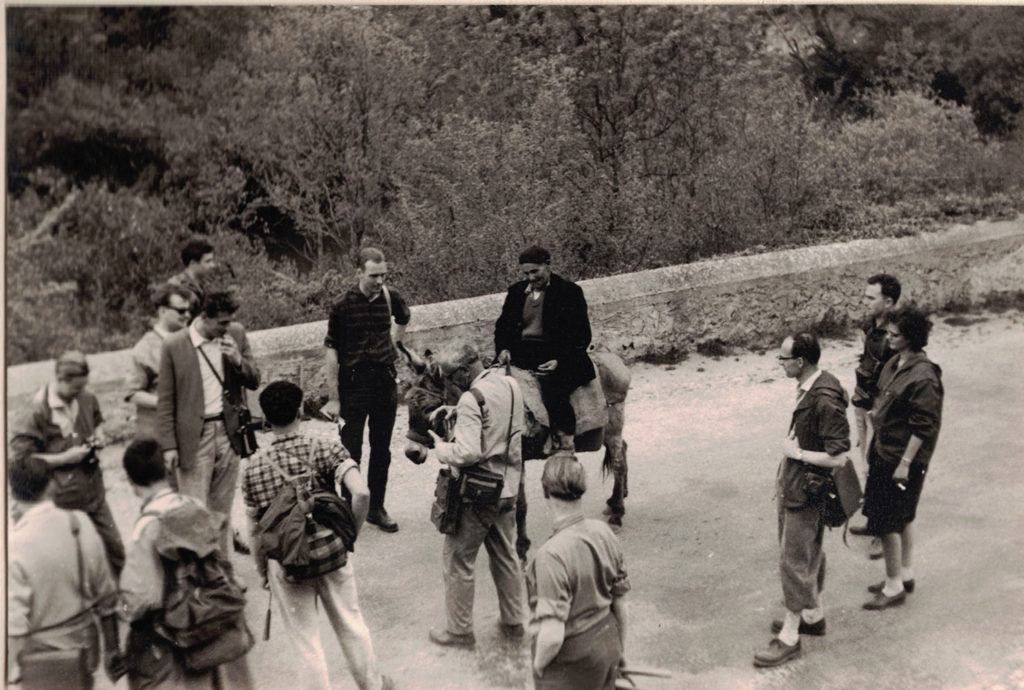
Mapping Exercise in Northern Spain, March 1961 Prof. Lotze looks down at his camera while talking to a local farmer who rides a donkey. Three persons carry a münsterche Geologentasche: an older student (3rd from left margin), Prof. Lotze (center), and Prof. Rosenfeld (3rd from right margin of photograph).
Goethe & Schiller's Thoughts about Science
Johann Wolfgang von Goethe and Friedrich Schiller published in 1797 a large number of two-line long, critical poems that castigated aspects of the intellectual life of their times. They called these poems "Xenien." I present here their thoughts on science with my translation. Their thoughts have still validity today!
Wissenschaft
Einem ist sie die hohe, die himmlische Göttin,
dem Anderen eine tüchtige Kuh, die ihn mit Butter versorgt.
Science
To some she is the high and exalted Goddess,
To others just a solid cow that supplies them with butter.
The "Student Advising Scene" from Goethe's Faust
Please download PDF to see full text of scene.
from Johann Wolfgang von Goethe, 1808, Faust I, part of Scene IV
translated in the original meters by Bayard Taylor 1870.
Taken from the Project Gutenberg Website.
Some lines are omitted and indicated thus...
Lines that can serve as independent sayings are highlighted in yellow.
Setting of this excerpt:
The tragedy of “Faust” plays in medieval times and this particular scene at a university where Faust is a professor.
After Faust has made an agreement with the Devil (Mephistopheles or Mephisto) he does not feel inclined to advise a student but Mephistopheles takes over. In this way Goethe could express more radical and unorthodox ideas. The scene is both funny and deep. It should be remembered that Goethe had a law degree and had worked at the highest court of the Holy Roman Empire of the German Nation before that nation ceased to exist.

